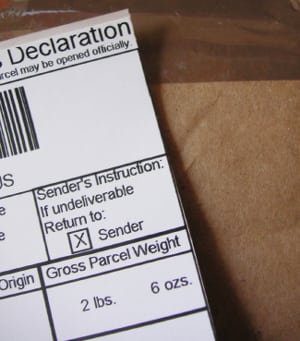 Many multichannel merchants are partners with marketplaces like Amazon and eBay, and big-box retailers like Sears, Walmart and the like. With them you’re not just processing orders, managing inventory and agreeing to performance standards. Working with one of our clients recently in their call center’s support operations for marketplaces, we focused on the cost of an error.
Many multichannel merchants are partners with marketplaces like Amazon and eBay, and big-box retailers like Sears, Walmart and the like. With them you’re not just processing orders, managing inventory and agreeing to performance standards. Working with one of our clients recently in their call center’s support operations for marketplaces, we focused on the cost of an error.
When was the last time you analyzed the cost of various types of errors? Not just the number of times monthly or annually a particular error occurs, but what is the actual cost of that type of fulfillment error? I’m talking about things like mis-picks, lost shipments and damaged parcels. The best place to capture this information is in the call center or fulfillment center.
Cost Per Error Example
Our client’s product assortment is more than 50% single-item shipments, with an average shipping cost of $17. Shipping costs will vary depending on the product and its weight and method of shipment. The company ships about 200,000 orders per year.
Here’s a cost breakdown of an error:
Original call center phone direct/indirect labor: $3.00
Original fulfillment direct/indirect labor/unit: $0.62
Original outbound shipping (average $17/package) $17.00
Customer call/resubmit order (direct/indirect labor) $2.49
Returns processing $2.50
Second fulfillment direct and indirect labor $0.62
Second outbound shipping cost (average $8/unit) $17.00
Total cost $43.23
The real important cost isn’t even tallied here. What about losing the customer over an error? Or worse yet, what’s the cost of not meeting the standards of the marketplace?
This company has chosen to conservatively use call tags because they cost $8.25 each. In their experience, 25% of the time the customer keeps the product because of its low retail value vs. shipping cost. So when they have to resend a replacement, they lose the product cost, profit and the call center and fulfillment costs. In the case of packages lost by the carrier, you probably don’t get reimbursed the full value of the product.
How to Proceed
Capture errors: Identify where in your operation you can capture the various types of errors and the reasons they occur.
Costs and elapsed timeframes: Determine what the typical costs are by working with the employees that work these transactions. Include your direct and indirect labor costs as well as external costs such as shipping.
Reducing transaction costs: Involve your staff to see where the opportunities are for reducing costs and elapsed times to resolve the customer’s problem.
Changing customer service practices: Like the example above, under a certain retail value and considering the shipping cost, does it make sense to have the customer return the product, or just dispose of it or keep it? Do you require the customer to return the product first before you reship the correct one? There you’ve already caused an issue. Consider shipping out the replacement before receiving the mis-picked product.
Management reporting and awareness: Post these errors and their costs monthly where it can get visibility and include it in your management’s KPI reporting.
We often get asked, what is an acceptable level of errors? In the example above, this type of error happens on 0.5% of the shipments or about 1,000 times per year. At that rate it costs $43,230 annually across the call center and fulfillment. The percent sounds good, but you need to keep addressing and reducing errors. If you’re the customer and it’s your order, that’s an issue!
Curt Barry is president of F. Curtis Barry & Company
